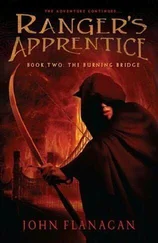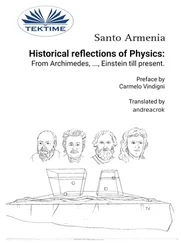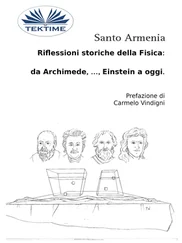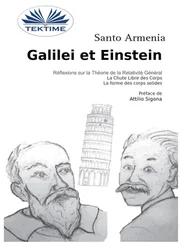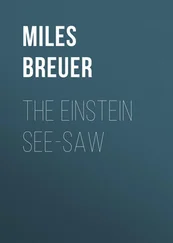What in the world is it? Belinda wondered. Some kind of nerve gas attack? It sounds worse than what happened in Bangkok last year.
“We’re flying toward the densest part of the gray cloud now,” the reporter said. “It seems to be centered north of Ennis. Something is hitting our front window now. They seem to be small silvery objects with wings, perhaps flying insects. Maybe I can catch one. They…”
’The voice stopped, and shortly afterward the helicopter engine noise halted. Another voice came on the radio. “We’re having technical difficulties. Please stay tuned,” it said.
Belinda hurried through the cafeteria door and walked rapidly down the walkway, away from the parking lot where others seemed to be hurrying. Along the gravel path by the brook something was rustling in the trees. It looked like a swarm of metallic insects. One of them landed on her arm. Belinda reached down to brush it off and froze in midstride.
She fell into darkness.
ROGER HAD ARGUED WITH THE OTHERS ABOUT HOW TO approach the last maintenance station. He and Whitey wanted to blast through at top speed. George suggested approaching more slowly. Iris favored George's strategy and finally convinced Roger and Whitey. When they reached the station, Whitey turned off the vehicle’s running lights and eased the truck forward at low speed, listening.
As they reached the edge of the shaft, Roger heard a buzz. Looking upward, he saw a new swarm of Hive Flyers, these much lower. The maintenance truck moved slowly across the open area beneath the shaft. Near the top of the opening, Roger could see large dark shapes moving down the walls of the shaft. He thought of Alice, and felt a sinking fear.
The Flyers ignored them at first. Then, as if reaching some consensus, the swarm began to drop down the shaft. Whitey pushed the accelerator control all the way forward and the vehicle began to pick up speed.
George took the Bridge detector from his pocket and pointed it like a weapon at the wall above the double line of long cylindrical dipole magnets that made a two-layer stack on the right side of the tunnel. The bright blue cutting beam sprang from the device, and he slashed it downward, first through cryogenic plumbing above the magnets, and then through the thin-walled magnet cylinders themselves.
The magnets of the great accelerator contained large reservoirs of cryogenic liquids, a reservoir of liquid helium encased in a blanket of liquid nitrogen. The ultra-cold fluids exploded outward into the tunnel behind the speeding vehicle. Roger looked backward at the steam clouds of condensed water vapor produced by the outpouring of ultra-cold. Through the steam clouds he could see the Hive Flyers hit the wall of ultra-cold gas and drop to the floor of the tunnel. “The SSC will never be the same,” Roger said.
In another ten minutes they had reached the injection line branch, where the beam from the injector joined the main SSC ring. Whitey halted the vehicle, and they climbed out. He looked back down the tunnel. “Those damn critters will be here soon,” he said. “I’d better wait right here and stop ’em.” He walked to the back of the truck and began to unload gas cylinders.
“You can’t do that,” said Iris. “Their merest touch would be fatal. There’s nothing you can do.”
Whitey smiled. “Oh yes there is, ma’am. I was a demolition specialist in the Marine Corps durin’ the Gulf War. I know how to blow the hell outta things better’n just about anybody. These gas bottles are full’a hydrogen, oxygen, and methane. And the truck carries big cans of acetone, xylene, and alcohol. For solvents, y’know? Just give me a few minutes, and I can rig a pretty nice reception for those Hive critters when they come down the tunnel. I’m just sorry you folks can’t stay to enjoy the fireworks. But you’d better get on with your bidness and leave me to do mine.
“Go on now. Get on up that branch tunnel. Time’s a’wastin’.”
They shook hands with Whitey, and George led the way up the sloping tunnel. Finally they reached the injector itself, which was buried in a curving tunnel at a higher level. George led the way along the curving walls to the injector power supply room, a stubby cylinder carved into the Austin Chalk stratum.
He pointed to the large motor-generators that towered above them, making a high whining noise as they spun. “These,” he said, “turn huge vacuum-enclosed flywheels. The SSC injector is made of normal nonsuperconducting magnets that receive the beam and dump energy from the flywheels to the magnetic fields as they ramp up to accelerate it. Then they eject the beam and ramp back down, putting most of the stored energy from the magnetic fields back into the flywheels. The energy flows back and forth like that, with new energy from the power lines brought in continuously to make up for the losses due to bearing friction, coil resistance, and eddy currents. You’ll find more electrical energy available here than anywhere else in the whole accelerator, even though this is only the injector part. Most of the rest of the power goes into the cryogenics distributed all around the ring.”
Iris held her fingers about two centimeters apart. “I will need a gap about this size across which the electrical energy will flow,” she said above the whine of the generators.
George nodded and led the way across the room to an area that was surrounded by a wire fence. His blue laser beam chewed through the lock on the gate. Inside the gate he moved a long aluminum shorting pole out of the way and walked to the back wall of the enclosure. “This is the area,” he said, “where, in case of an electrical emergency, the total electrical energy of the machine can be dumped into a dummy load, a large tank filled with water that is vaporized by the dumped energy and vented off. If I cut here and here” — he indicated two thick copper bus bars — “and bend them to form a gap, you’ll have what you want. See the button over there?” He indicated a large red button with a glass cover outside the cage. “It triggers thyristors that will dump all the power here. Shall I do it?”
Iris nodded. George cut the copper bars with the laser, then found a large wrench and bent them until their shiny cut surfaces were separated by about two centimeters, held at that gap by a scrap of plastic insulation.
Then he walked outside the cage to the red button. He removed the plastic cover so that the button was exposed. “We need a way to push this to dump the power.”
“Do not concern yourself. I will deal with that,” said Iris.
As she spoke, there was a very bright flash of light, followed shortly by a deep and very loud whump sound from the branch tunnel.
“Whitey was a good man,” said Roger.
Iris walked to the distorted bus bars, and her face contorted. She extracted a small pink sphere from her mouth. It seemed to have flecks of bright red blood on it. “This is the Bridgehead I have carried,” she said. “My contact with the Makers is broken for the first time. It is very strange to be so alone. You humans must be very strong to bear it continuously.” She placed the sphere on the block of plastic in the gap.
“Now let me explain,” she said. “When you trigger the discharge, this Bridgehead will momentarily expand. At the same time, its twin Bridgehead in the scintillator unit on the other side of the ring will be connected to a new fluctuation Bridge extracted from the quantum vacuum of your Bubble, a Bridge selected because it spans an interval about seventeen of your years into the past. The two Bridgeheads in the Maker Universe will be joined and their connection with the Maker Bubble released. This will be done all in one operation.
“The result will be the creation of a Bridge that makes a timelike loop, one Bridgehead here and the other about seventeen years in your past. This Bridgehead here will expand and dissipate as the singularity forms and goes to completion. During this process, because the singularity annihilates the intervening space-time, both Bridgeheads will momentarily be in the same place. If we succeed, since the present no longer exists, you will be propelled back through the Bridge to the beginning of the loop, to the site of the Bridgehead in the past.”
Читать дальше



